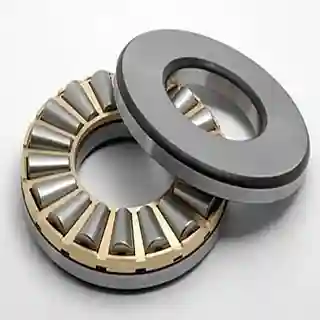ROLLER THRUST BEARING
Get Fastest Delivery / Get Best In Market Rates / 43+ Years Of Experience
Thrust roller bearings are compact and efficient solutions designed to support axial loads in both vertical and horizontal shafts. They reduce friction, prevent shaft drifting, and ensure smooth rotational movement in demanding applications.
Depending on the design, the rollers may be spherical or cylindrical and are housed in cages with evenly spaced pockets. These cages ensure the rollers remain aligned within raceways along a single axis, preventing misalignment or premature failure. While the cages don’t carry the load themselves, they keep the rolling elements stable and secure.
Balaji Bearings, a leading Roller Thrust Bearing Supplier and Manufacturer in India, provides a comprehensive range of high-quality thrust roller bearings. With strong operations in Mumbai, Pune, Kolkata, and Chennai, we supply industries across the country. Our extensive stock guarantees quick delivery, reduced downtime, and enhanced operational efficiency for customers.

Features Of Roller Thrust Bearings
- High Axial Load Capability: Specially designed to carry heavy axial forces, making them ideal for load-bearing shaft applications.
- High Stiffness: Their construction provides excellent rigidity, ensuring precise shaft alignment even under heavy loads.
- Space-Saving Design: Their compact axial height makes them suitable for applications with limited installation space.
- Durability: Manufactured from high-quality materials, these bearings offer long service life even under harsh conditions.
Applications of Roller Thrust Bearings
- Drilling Rigs: Handle the immense axial loads generated during drilling operations.
- Gearboxes: Used to support axial forces created by helical and bevel gears.
- Cranes: Essential in crane hooks and hoists, supporting heavy loads during lifting operations.
- Extruders: Applied in plastic and metal extruders to withstand high axial forces generated by the screw mechanism.
 Balaji Bearing Co.
Balaji Bearing Co.